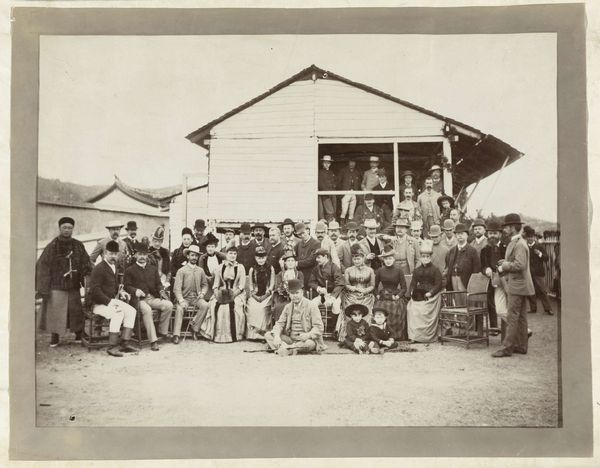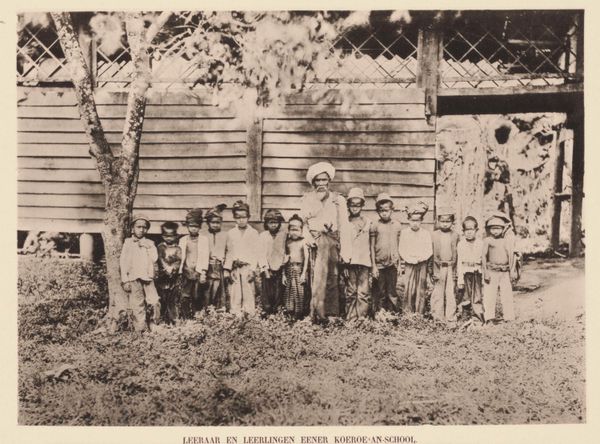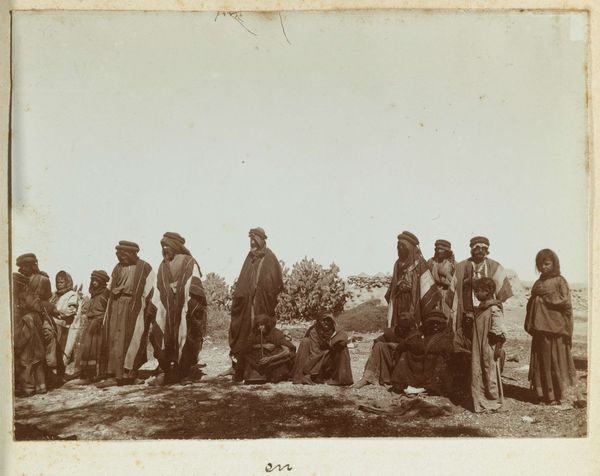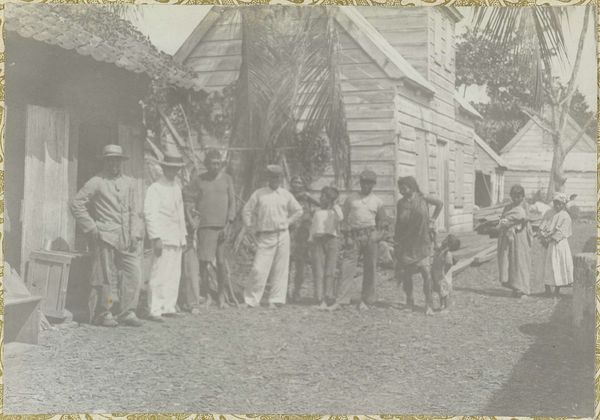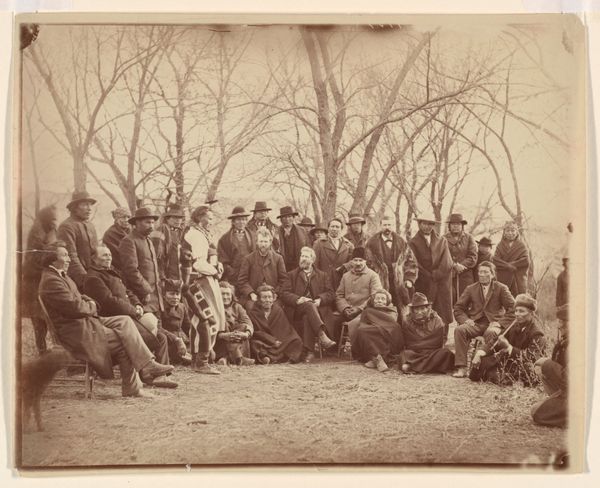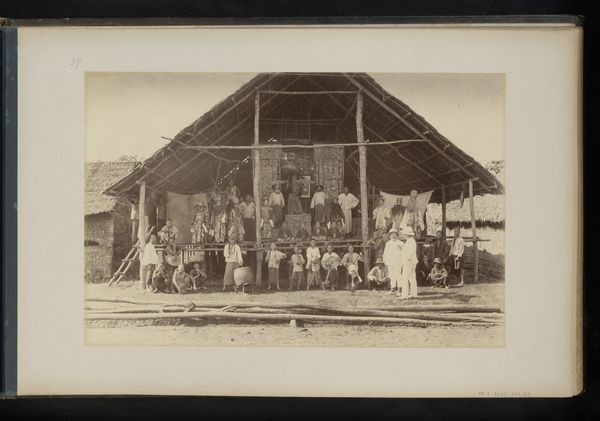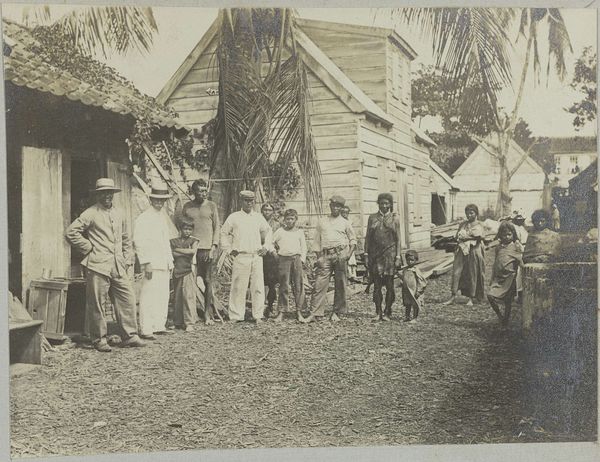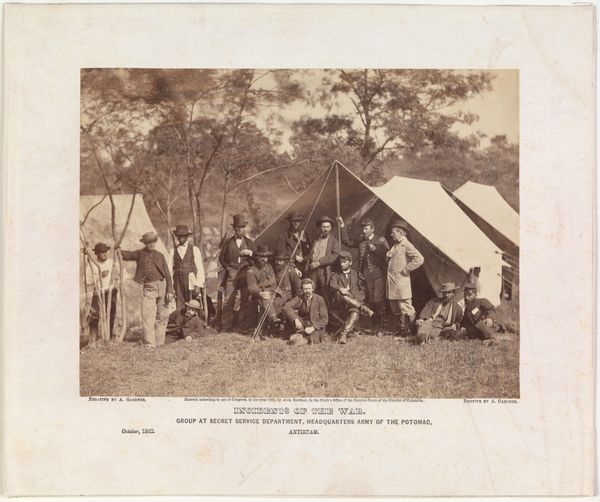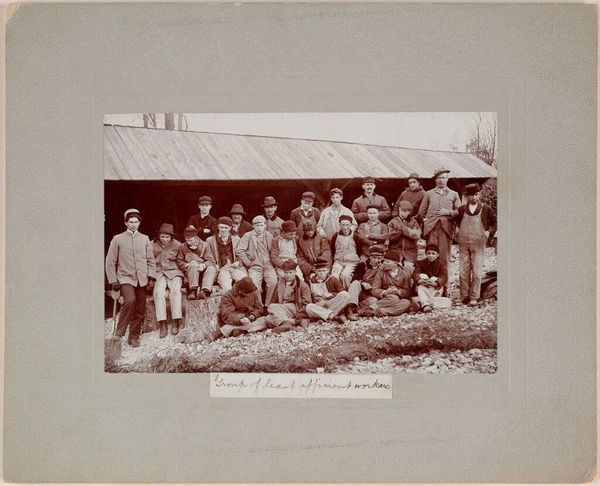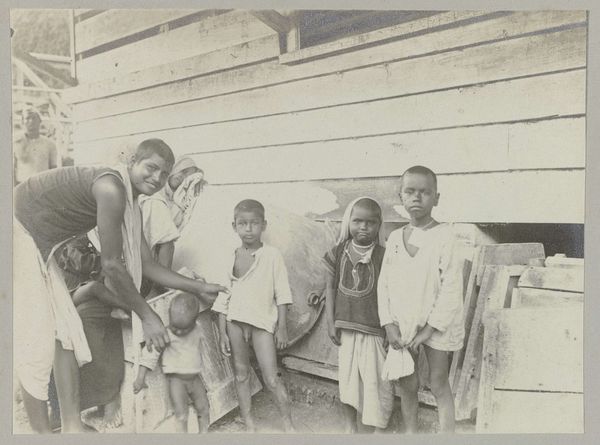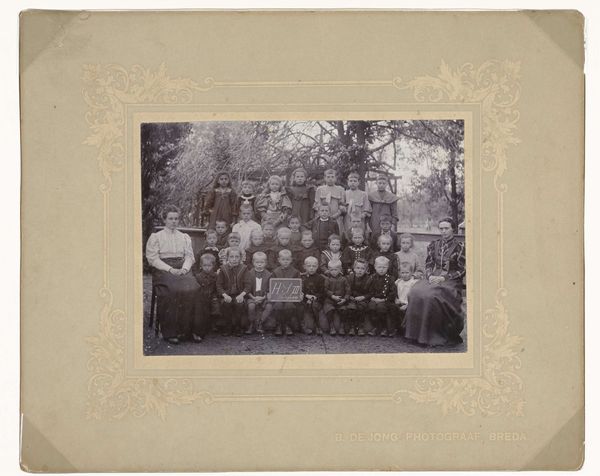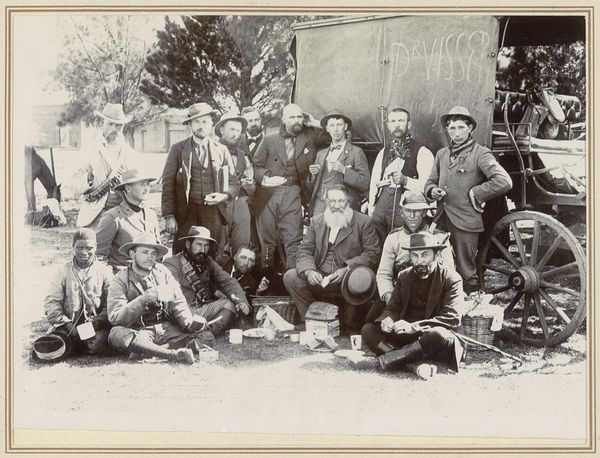
photography, albumen-print
#
portrait
#
pencil sketch
#
asian-art
#
photography
#
group-portraits
#
albumen-print
Dimensions: height 211 mm, width 290 mm, height 244 mm, width 329 mm
Copyright: Rijks Museum: Open Domain
Editor: So this is "Buddhist Monks" by P. Klier, likely taken between 1895 and 1915. It's an albumen print, which gives it this unique, almost sepia-toned look. The group portrait of monks is really striking. What’s your take on it? Curator: What’s immediately interesting is the albumen print itself. It was a mass-produced medium, and seeing it used for this image challenges our traditional understanding of photography as purely fine art. Who was Klier producing these for, and what kind of labor was involved? The arrangement of the monks themselves almost mimics the repetitive architecture behind them. Is this about the standardization and spread of Buddhism as a cultural commodity? Editor: Cultural commodity, interesting... so it's not just about a group of monks being photographed? Curator: Precisely! The very act of producing this image using a method associated with mass culture and consumption shifts its meaning. It invites us to examine the role of photography in shaping Western perceptions of Buddhism and other cultures in the late 19th and early 20th centuries. These weren't artistic portraits intended to be hung in galleries, but cheaply made items. Editor: It’s almost like Klier was packaging and selling an idea of enlightenment. The monks carrying their bowls almost feels… staged now. Curator: Exactly. It prompts a reconsideration. What about the means of support represented in the photograph? The children as assistants? Do they participate in the larger production and consumption chain, or are they removed from this structure? How do their labor requirements and involvement redefine class boundaries? Editor: So looking at the materials and production processes helps us unpack all those hidden layers. Thanks, this has totally changed how I see this image! Curator: Indeed, and the implications it has for re-assessing photography in non-Western cultures. There are many further applications for future discussions!
Comments
No comments
Be the first to comment and join the conversation on the ultimate creative platform.
